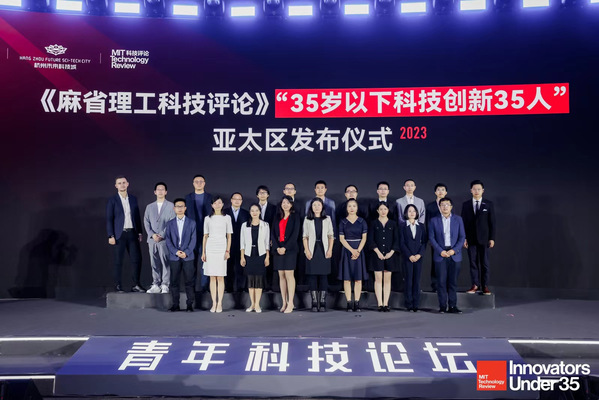Professor Chen Yang was selected for the 2023 “MIT Technology Review Innovators Under 35 Asia Pacific” by MIT Technology Review
On November 2, 2023, the new round of MIT Technology Review Innovators Under 35 Asia Pacific (TR35 Asia Pacific) rankings was released. Professor Chen Yang from the Micro and Nano Engineering Laboratory and the Research Group of Nanophotonic devices and systems at the School of Engineering Science, University of Science and Technology of China, was awarded the prize for his research on the chiral interactions between light and matter at the nanoscale, as well as its enhancement and modulation, which has important application prospects in drug development, disease diagnosis optoelectronic devices, and other fields.

Chirality is a fundamental attribute of nature. As an important branch of optics, chiroptics has been widely applied in drug development, disease diagnosis, optoelectronic devices, quantum optics, etc. However, there is a key bottleneck problem in the field of chiroptics: the chiroptical responses of natural materials are extremely weak, and thus hard to be detected or harnessed. To overcome this challenge, Yang Chen combined cutting-edge physics, emerging materials and state-of-the-art fabrication techniques to find enhancement and flexible modulation of optical chirality at the nanoscale. Chen has made the following significant contributions: Firstly, he has simultaneously realized near-maximum chirality (CD = 0.92) and high-quality factor (Q = 2662) over an ultrathin nanostructured film of only 220 nm, which provides a versatile platform for spin quantum emitters, chiral light sources and detector, etc. Secondly, he has achieved near-perfect circular polarization, large directionality and tunable emission angles all in a compact light-emitting device, paving the way for portable, integratable and multifunctional light sources. Thirdly, he has demonstrated high-fidelity, long-distance and unidirectional transportation of valley photons for the first time, which could push forward the development of valleytronic devices and help keep Moore’s law alive. Last but not least, Chen has completed the demonstration of strong coupling induced by weakly chiral enantiomers for high-sensitivity chiral detection. Chiral signals are enhanced three orders higher than the conventional method. This could promote the development of portable chiral detector.

Since 1999, the MIT Technology Review has been selecting young innovation leaders under the age of 35 from around the world who are expected to have a profound impact on future global technological development, covering fields such as life sciences, advanced materials, energy and environment, and information technology. This provides a platform for high potential young talents to promote primitive innovation, cutting-edge innovation, and key technological innovation. In 2010, the first regional selection was held; In 2017, the China region ranking was first released; In 2021, the selection for the Asia Pacific region landed in China for the first time.